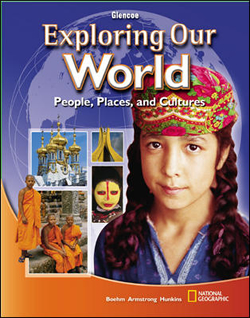
Exploring Our World: People, Places, and CulturesChapter 7: Physical Geography of Latin AmericaChapter OverviewsLatin America stretches from Mexico in North America to the southernmost tip of South America. Geographers divide the region of Latin America into three subregions: Middle America, the Caribbean, and South America, and each has a variety of landforms. Mountains are prominent features in many parts of Latin America. The Andes mountain ranges stretch along the Pacific coast of South America for about 5,500 miles (8,851 km). Mexico also has high mountain ranges along its eastern and western coasts with a high plateau between; it is part of Middle America, located where four tectonic plates meet, that has active volcanoes and frequent earthquakes. Some islands of the Caribbean were also formed by volcanoes, some of which are still active. The Amazon Basin of South America is east of the Andes. It contains the Amazon River and the world's largest rain forest. Latin America has vast natural resources, but not all countries benefit from them. Political and economic troubles in some countries, coupled with remote locations, lack of development money, and the wide gap between the rich and poor, have kept much of the regions natural resources from being fully developed. Brazil has products from its rain forest and mineral deposits, and the country has built wealth based on these resources. Some Central American countries like Nicaragua and Guatemala have rich gold deposits but because of political conflict and lack of transportation cannot mine them. Perhaps the best known feature of South America is its vast rain forest, located in a tropical wet climate. Its warm temperatures and heavy rains provide an ideal growing environment for exotic plants. However, Latin America also has a variety of other climate zones. Most of Latin America lies in the Tropics, the area between the Tropic of Cancer and the Tropic of Capricorn. Middle America, most Caribbean islands, and north central South America have a tropical dry climate. Temperate climates are found mostly in the parts of South America that lie south of the Tropic of Capricorn. Climates tend to be drier and cooler at the higher elevations in some parts of the Andes. |  |















